2013 | Forum
Beyond the Formula
Once again this year the Forum takes a broad look at the global film scene. We interviewed section director Christoph Terhechte about local perspectives on global phenomena, the growing popularity of experimental narrative forms and the discussion culture of a Russian workers' club.
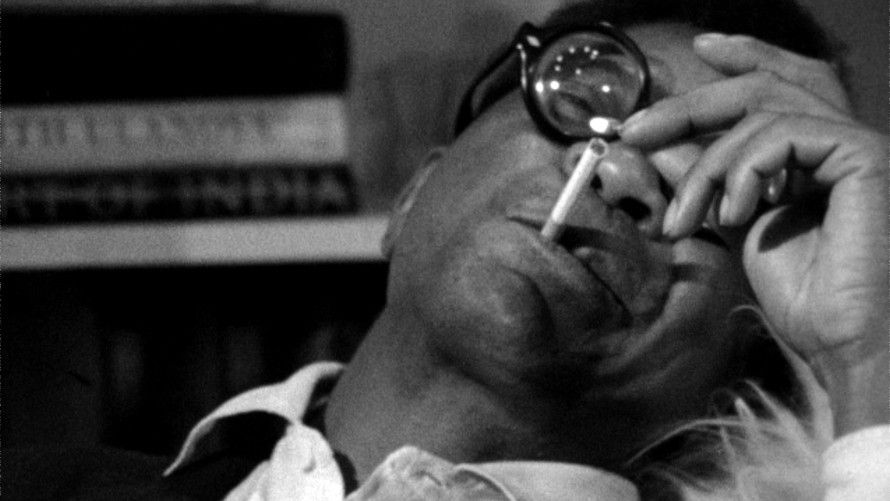
Jason Holiday in Portrait of Jason by Shirley Clark
Wong Kar Wai is the president of the International Jury at the Berlinale 2013. Is it great to see a discovery of your own section right at the heart of the festival?
I don't know if he was really discovered by the Forum, but we did indeed show his early films in the section. Fallen Angels (in the Forum in 1996) was an early attempt at a genre film, a gangster movie, in which he tried to incorporate his specific style of narration into a classic Hong Kong genre. He did that again with Ashes of Time, and yet again in this year's festival opener, The Grandmaster.
What I want to say is that filmmakers try out new narrative forms in a section like the Forum. Why shouldn't they become more established at some point and reach a greater audience? Experimental narrative techniques that challenge dominant modes of perception, such as the dissolution of boundaries between feature and documentary. Of course this has existed for a long time, but in the Forum this is self-evident. The section wants to show that there is an audience for every type of film and not just for formulaic movies – and of course you can always expand upon this idea until it is so strong that it pushes ahead into the Competition, the very centre of the festival.
Is the Portuguese film Terra de ninguém (No Man's Land) by Salomé Lamas, in which a mercenary talks about the atrocities he has committed, an example for this sort of blurring the boundaries between fiction and documentary?
It is a documentary, but at the same time a piece of fiction. At first the director asks herself whether or not it is fiction, because until the very end she cannot be sure whether the man who recounts his story is telling the truth. What is clear is that the background information is true, insofar as the actions that he mentions actually happened. But it remains unclear how much he was really involved and to what degree the story is false. Of course, the same goes for every documentary. One can never know whether people are telling the truth and there are always different versions of a story. Terra de niguém explicitly addresses the possibility of falsehood or pathological lying.
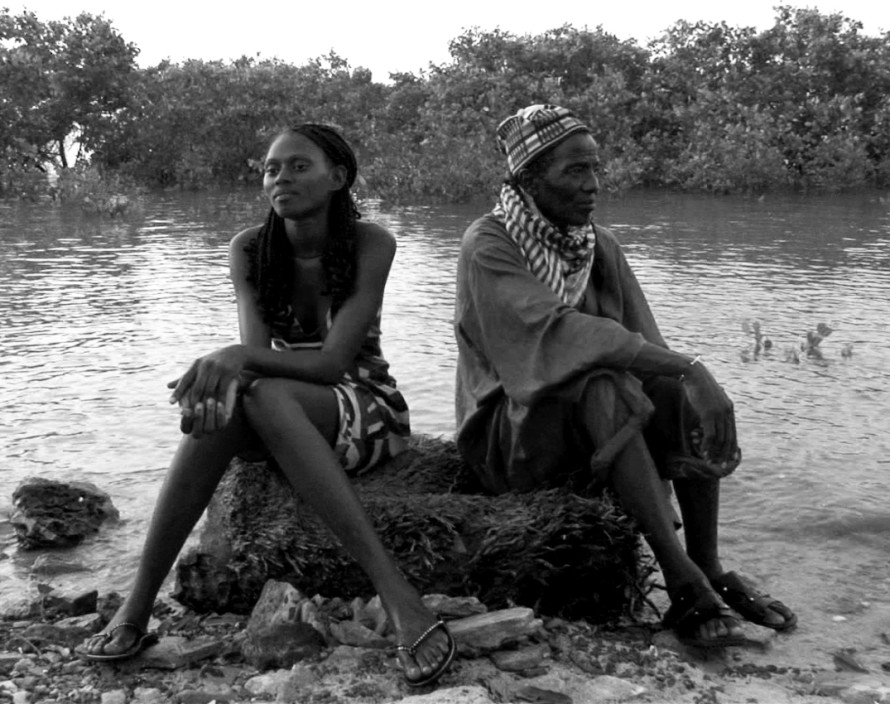
Fatu Djebaté and Mutar Djebaté in A batalha de Tabatô (The Battle of Tabatô) by João Viana
The undefined boundaries between feature and documentary film can be seen in many of this year's films. Larger audiences are beginning to get used to these hybrid forms. The Greek documentary Sto lyko (To the Wolf) is partially staged. But you don't know how much, because the people play themselves in the film. La plaga (The Plague) employs a feature film style of dramaturgy, in order to follow its five protagonists in today's Catalonia. A batalha de Tabatô (The Battle of Tabatô) is a feature which has very strong documentary elements. The film takes place in Guinea-Bissau and tries to contrast African tribal traditions with the colonial history.
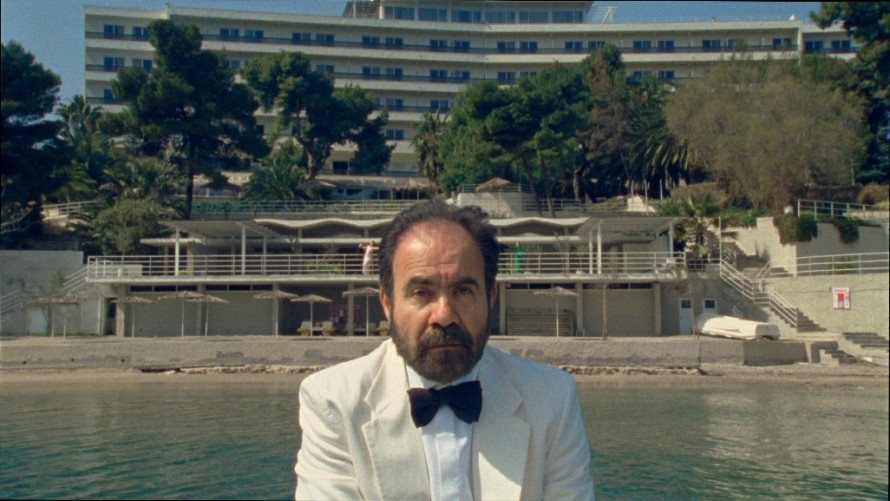
Christos Stergioglou in I aionia epistrofi tou Antoni Paraskeua (The Eternal Return of Antonis Paraskevas) by Elina Psykou
Actor in a Double Sense
The double meaning of "actor" - both the dramatic sense of the word and that of historical actor - lies at the centre of the film Matar extraños (Killing Strangers) by Jacob Secher Schulsinger and Nicolás Pereda. The question arises: how should an actor actually play a historical role? The film shows a casting for a fictional film about the Mexican Revolution. Is that a documentary or fictional work? I believe there is a growing awareness that there is no clear delineation and that whenever a camera is present, one must speak of a form of staging.
That sounds like the Brechtian tradition, in which daily life is presented in alienated form, in order to create distance from it and to be able to comprehend it better. In this context, the film Die 727 Tage ohne Karamo (The 727 Days Without Karamo) by Anja Salomonowitz springs to mind...
Her film is extremely stylised. The colour yellow dominates the décor and the costumes. It is a documentary in the sense that actual cases of bi-national couples are portrayed. But the director has dressed them in costumes and lets them act in settings, in order to extract this authenticity factor, the overwhelming emotion. Through a feature-film methodology, she tries to abstract and generalise. Of course there is something Brechtian about this. Interestingly, there is a Russian film, Za Marksa... (For Marx…) by Svetlana Baskova, which is about factory workers who rebel against their management who are using early capitalist methods in post-socialist Russia. They form their own union and have a workers film club in which they discuss Brecht vs. Hollywood. It's magnificent.
Everyone's talking about the Euro crisis. How do the three Greek films in your programme talk about their country?
I find the word "crisis" awful, because it is a belittling word that lets you believe that there are eternally returning mechanisms that one cannot do much against. The Forum programme has a deep interest in the upheaval resulting from the collapse of the communist world across the planet. This has held our attention since the late 1980s – ever since it became clear that the hope for a good socialism was not fulfilled by the reality of the communist system. At the same time, capitalism experienced a boost, which led to the worst excesses and finally to the impoverishment that you now see in Greece, Spain and Portugal – three of the countries that are always labelled "crisis nations". We have seen an unbelievable concentration of wealth at the cost of broad social groups. These groups not only suffer from the immediate economic effects of all the speculation and burst bubbles, they also have a problem of orientation. Because for a long time we were told that the social market economy was at its end and that it was urgent that we adopt Thatcherite methods. That devastated everything and today we no longer have images or ideals for society to strive for. The programme deals with these upheavals and tries to comprehend what actually happened in the context of history.
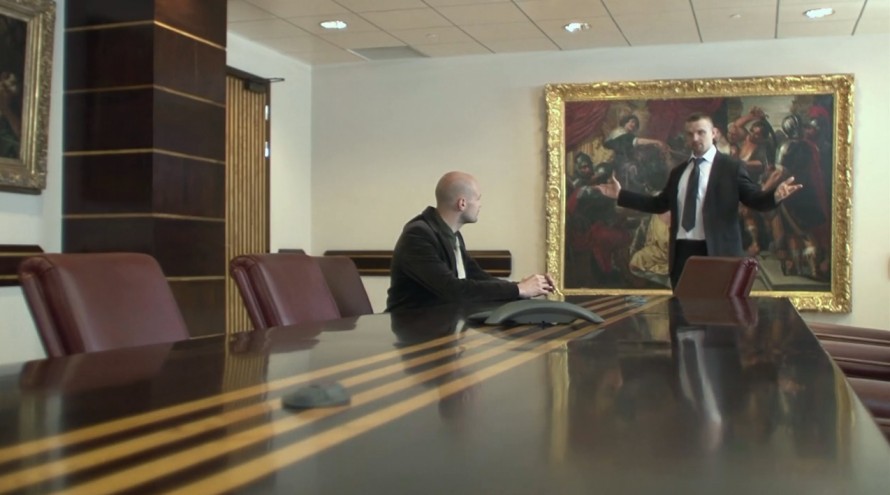
Denis Yakovlev and Vladimir Epifantsev in Za Marksa... by Svetlana Baskova
Visualising a Farce
Za Marksa… is about a visual form to a quote from Marx, who said, in response to Hegel's statement that history always repeats itself, that Hegel forgot to mention once as tragedy and once as farce. Today we find ourselves in the farce and this film illustrates it perfectly. Today, it is unbelievably difficult to position oneself socially, politically and geopolitically. A lot of films deal with the position of the individual in society, but not some kind of alleged crises. The word crisis assumes that everything is fine about the capitalist system and that one must only further reduce the influence of the state in order make everything all right again. The result is that the Western capitalist system has lost all sense of restraint.
Any new ideas on the horizon? In Za Marksa... the workers organise a union in order to counteract exploitation...
Yes, but that is doomed from the beginning. I don't believe that one can do much against it with the old means. The films often refer to a humanity and locality. There are many examples where characters return to their homeland in order to try to explore who they are and what really counts in human co-existence. In the Taiwanese film Tian mi mi (Together) by Hsu Chao-jen, a young woman returns to her family and the old neighbourhood. Both have changed completely. In Elelwani, by Ntshavheni Wa Luruli tradition is first perceived as a threat. Although a woman is studying at university, she must enter to a forced marriage. But she slowly rises within this tradition, which opens up a totally new horizon for her. Many films are about recollection. They don't provide answers, but they try to describe how we are adrift in a larger sense. In Computer Chess, Andrew Bujalski returns to the 1980s and looks at the atmosphere of his youth, the early days of the computer nerd movement. Annemarie Jacir jumps back to the 1970s. In Lamma shoftak (When I Saw You), she tells the story of a boy who leaves home because his father has disappeared and because he doesn't get along with his mother. He goes to a PLO camp where fighters are trained. This reflects a trend in contemporary film. None of them has an answer. One attempts to position oneself and to somehow break out of this clearly fatal race for prosperity. People are searching for values, meanings, identities.
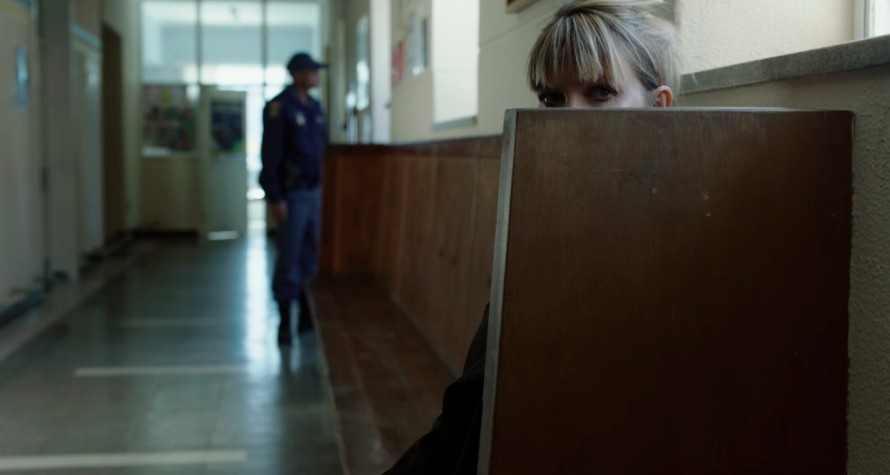
Jessica Haines in Fynbos by Harry Patramanis
Is Fynbos by Harry Patramanis, in which a woman drifts into the South African townships, a good example of this type of current?
In the beginning you see her throw away her identity by emptying the contents of her handbag into a rubbish tip, including her passport. She then claims that she was robbed. In the plot of the film this has to do with the fact that she has mental problems. But also the fact that the company of her husband, a real estate broker, is totally over-stretched. He tries speculation, he tries to sell a villa situated between heaven and earth, beneath the mountains but above a township. A beautiful glass architecture in a wonderful landscape, but of course totally unreal because it embodies the stark contrast between rich and poor in South Africa in terms of geography and architecture. The husband only wants his wife to keep her mouth shut and play along so that he can close the deal. She refuses to play along through her psychological illness and by fleeing her identity.
Changing Moods in Japanese Cinema
Fukushima is once again a topic in the Forum. How has the disaster changed Japanese film?
Senzo ni naru (Roots) by Kaoru Ikeya is about an old lumberjack who doesn't really want to believe what happened. His house built according to traditional Japanese craftsmanship is destroyed by the tsunami and he wants to rebuild it. The entire village moves away, including his wife. Everyone abandons him. But he remains stubborn and stays put. It's a film about a denier who stands by his tradition. Atsushi Fnahashi (Forum 2012: Nuclear Nation) brings Sakura namiki no mankai no shita ni (Cold Bloom), the film that was postponed by the tsunami. It takes place on the east coast of Japan. The director has made some slight changes to his story, as is the case in many contemporary Japanese films. Everyone is trying to reflect upon what happened, but not just by showing aspects of the devastation. The entire mood is different. One senses greater doubt about the identity that characters carry within them. "Being Japanese" is less intact. You would have to talk to the director to find out how much of that was already in Sakura namiki no mankai no shita ni and how much was influenced by the course of events. He tells an unbelievable, melodramatic love story – which is also romantic in a way. But sad at the same time, because so much is destroyed – and that could surely have something to do with the disaster.
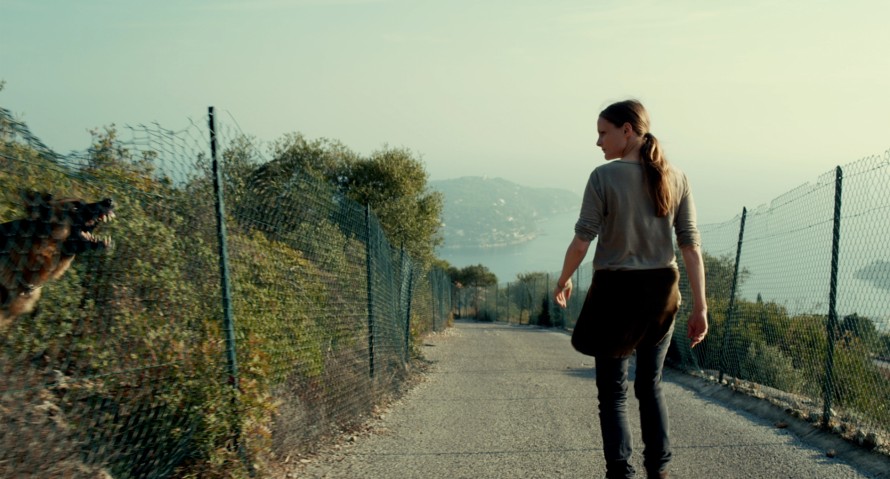
Anne Ratte-Polle in Halbschatten by Nicolas Wackerbarth
In Forum Expanded the title of this year's group exhibition is Waves vs. Particles. What is your impression of contemporary cinema? Are new waves forming or do you see primarily an atomisation into individual works?
I don't think you can talk about big currents or waves. The world has become too transparent for that. It was the opacity of earlier times that made such waves possible. We knew far less about what was happening elsewhere and therefore identified more with one thing. Today the influences are so diverse that you no longer have trends in cinema, beyond certain breaks in national cinematographies caused by social or political upheaval.
A current example of this is Georgia. Following independence and the civil wars, no films were made there for the longest time, even though Georgia had very interesting cinema in the 1960s, 1970s and 1980s. Now there is a young generation aged around 30 or 35 who are able to make feature films again. Grzeli nateli dgeebi (In Bloom) by Nana Ekvtimishvili and Simon Groß is an example. On the one hand, they tap into Georgian narrative traditions – one recognises stylistic means that filmmakers like Otar Iosseliani and Abuladse used. Their eye is typically Georgian. On the other hand, the film is an attempt to deal with the lost time, the two decades these young filmmakers grew up in.
Are global phenomena like capitalism addressed differently on the local level?
Sure. But that depends on the director. Of course the Argentine perspective is different to the Canadian or Korean experience. We are all integrated into the system differently and all have a different point of view. There are typical local narrative techniques, even if they are extremely difficult to describe – and if that is possible at all, maybe only through individual works. Viola by Matías Piñeiro, for example, follows a very playful Argentine storytelling tradition, in which the characters play roles and leave the viewer unsure whether they are playing their role in the film or their role in the role. One can describe these traditions in the individual films. In German film the Berlin School provides a more cohesive stylistic unity. It didn't surprise us that Halbschatten (Everyday Objects) by Nicolas Wackerbarth, who feels connected to the Berlin School, plays in the south of France, a region that appears to attract members of the Berlin School. So there are certain regional and national particularities, but much of it eludes verbal description.